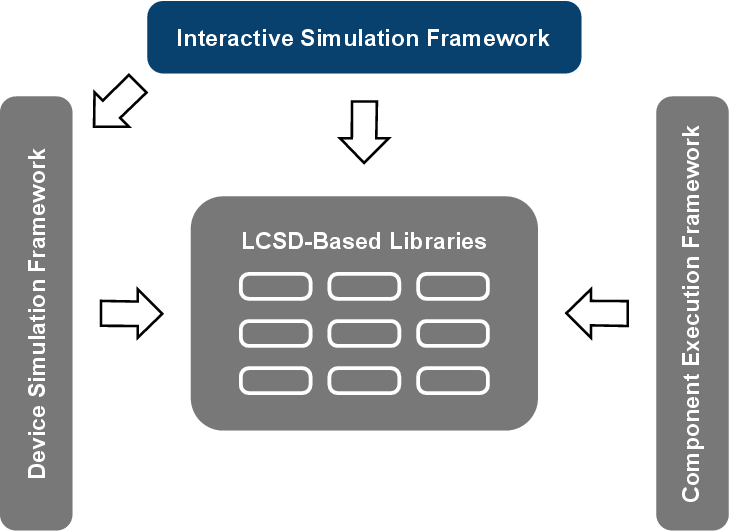
Although the previously discussed component execution framework increases the flexibility of setting up simulations, the approach supports primarily advanced users. To extend support specifically to end users, this chapter presents an interactive simulation framework, based on a CBSE approach - similar to the previously discussed component execution framework - to enable a flexible and modular setup of simulation-focused CSE applications. As the name suggests, the focus is on end user interaction and thus on usability. Each component of the CBSE-based framework shall provide access to a full-fledged application, such as a device simulator, providing the end user the ability to, for instance, utilize different simulation tools on the same software platform. To underline the component’s containment of a full-fledged application, the term module is used instead of component. Overall, an interactive simulation framework promises improved end user experience as different applications can be utilized in a unified manner, as, for instance, they share the same visualization backend. The key for supporting this is based on enforcing a unified interface upon the individual modules wrapping the external tools, as is introduced by a CBSE approach.
An interactive simulation framework is characterized by extending the previously established requirements for a component execution framework by incorporating GUIs (Section 6.1). Interactive simulation frameworks further extend the set of tools which benefit from LCSD-based libraries (Figure 6.1), as due to the CBSE-based approach available functionality provided by, for instance, libraries can be reused. Most importantly, though, due to the rigorously applied decoupled software designs presented in this work, reusability is not restricted to LCSD-based libraries, but also frameworks themselves can be reused. Section 6.2 introduces an approach for an interactive simulation framework. The presented investigations focus on utilizing the previously introduced device simulation framework ViennaMini (Section 4.3) instead of the component execution framework ViennaX, as it reflects the more relevant application scenario in the field of MNDS, being the focus of this work.
